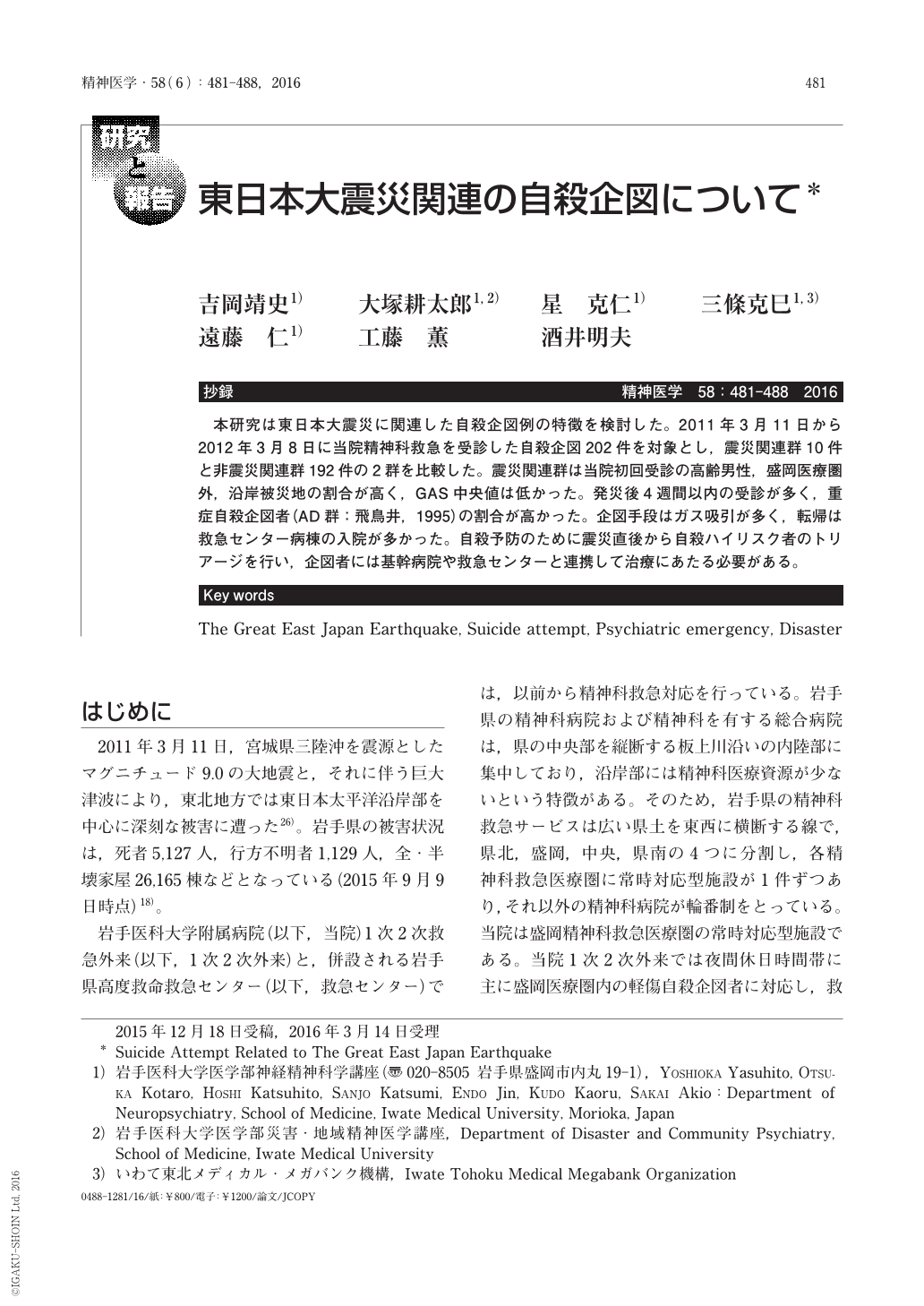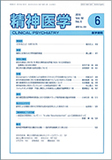Japanese
English
- 有料閲覧
- Abstract 文献概要
- 1ページ目 Look Inside
- 参考文献 Reference
抄録
本研究は東日本大震災に関連した自殺企図例の特徴を検討した。2011年3月11日から2012年3月8日に当院精神科救急を受診した自殺企図202件を対象とし,震災関連群10件と非震災関連群192件の2群を比較した。震災関連群は当院初回受診の高齢男性,盛岡医療圏外,沿岸被災地の割合が高く,GAS中央値は低かった。発災後4週間以内の受診が多く,重症自殺企図者(AD群:飛鳥井,1995)の割合が高かった。企図手段はガス吸引が多く,転帰は救急センター病棟の入院が多かった。自殺予防のために震災直後から自殺ハイリスク者のトリアージを行い,企図者には基幹病院や救急センターと連携して治療にあたる必要がある。
We examined the characteristics of suicide attempt cases related to the Great East Japan Earthquake. The study population included 202 suicide attempters who presented to our psychiatric emergency services between March 11,2011, and March 8, 2012. The patients were divided into disaster-related (10) and non-disaster-related (192) suicide attempters for comparison. The disaster-related group had higher percentages of middle-aged or older men who presented to our hospital for the first time, those who lived outside the Morioka medical district and in the coastal affected area, and lower median Global Assessment Scale (GAS) score. The group also had higher percentages of patients who presented within the first 4 weeks after earthquake and severe suicide attempters classified into the AD group (Asukai Grading System, 1995). It also had higher percentages of patients who attempted suicide by gassing and those who were admitted to the emergency center on the day of the suicide attempt. The results suggest the need to perform triage for those at high suicide risk and thereby prevent severe suicide attempts immediately after earthquake. For those who have attempted suicide, a system should be established in collaboration with regional core hospitals and the emergency center to provide treatment.

Copyright © 2016, Igaku-Shoin Ltd. All rights reserved.


